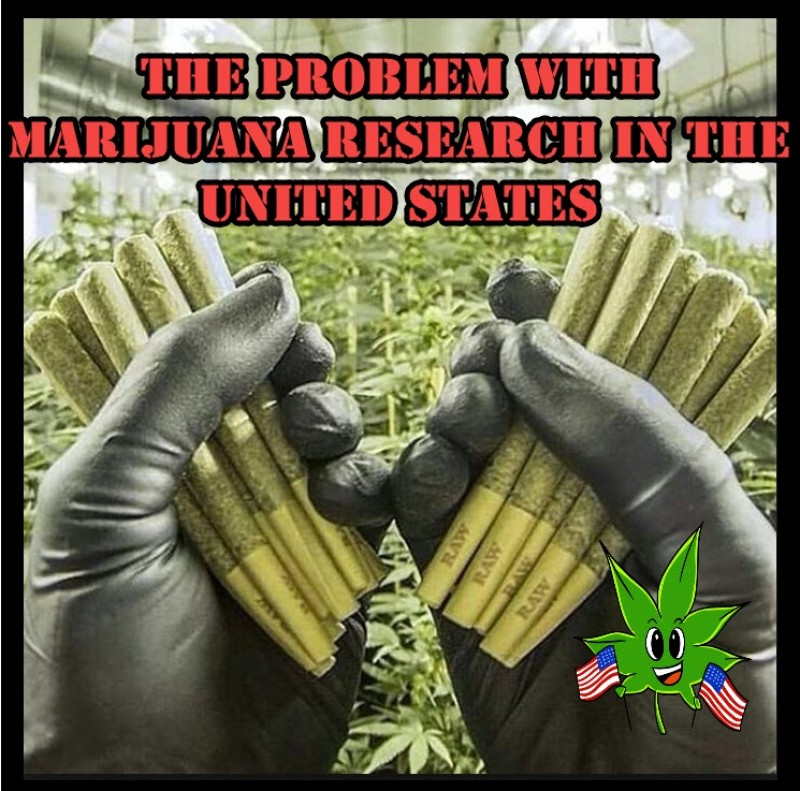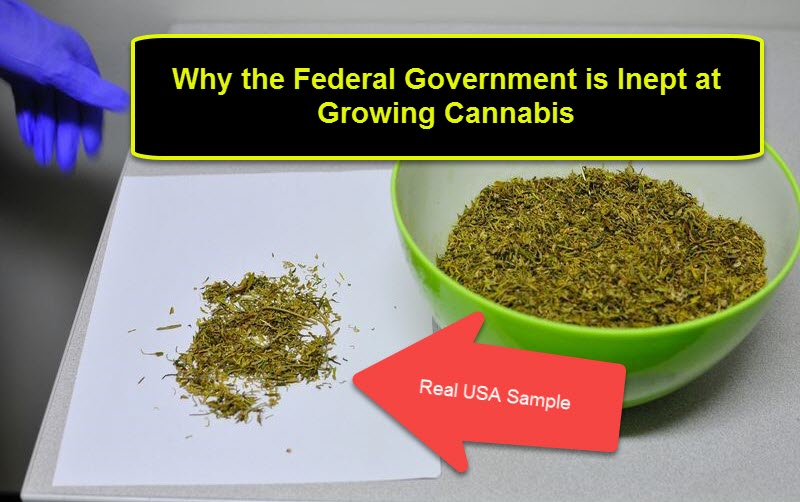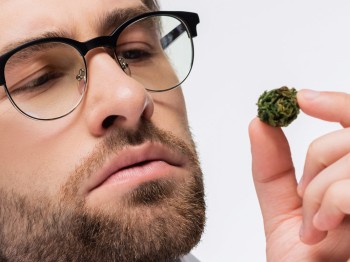The Problem With Marijuana Research In The United States
The Main Problem with Marijuana Research in America? from CannabisNet on Vimeo.
The Real Reasons Behind Skewed Cannabis Research
Scientists should be working together to promote the truth, but that isn’t what’s happening in the world of cannabis research in the United States.
A study lead by Dr. Salomeh Keyhani of the University of California, San Francisco, says that Americans’ perception of cannabis is rosy at best. In other words, she thinks much of what we know about pot is pretty much us being optimistic. “The American public has a much more favorable point of view than is warranted by the evidence,” she says.
“Perhaps most concerning is that they think that it prevents health problems,” says Keyhani. She says that even if studies show that cannabis can treat seizures in kids with rare forms of epilepsy, stop nausea and vomiting caused by chemotherapy, and treat nerve pain, she doesn’t think there’s any solid evidence that it can help with other kinds of conditions yet people consider cannabis a powerful panacea.
But isn’t it a powerful panacea?
The survey led by Keyhani and her team assessed the public’s views surrounding the risks and benefits of cannabis. They found that over a third of the 16,280 US adult respondents believed that edible cannabis can prevent illnesses, while 29.2% thought that cannabis in smoked or vaped form had preventive benefits. They thought it was good news that 92.1% believed it was unsafe to consume cannabis while pregnant but there was still a remaining 7.3% that thought it was safe. “That 7 percent is a lot of people who think that it’s OK during pregnancy,” Keyhani added.
Is that really what the problem is?
Because it seems that while US researchers are already having a difficult time properly researching cannabis due to its status as a federally illegal Schedule 1 substance, there are more factors at work that prevent research from progressing – or happening at all.
US Cannabis Research Is Biased
In January 2017, the National Academies of Sciences, Engineering, and Medicine released the most comprehensive report we have so far on the science behind cannabis. Although there was some good news, the list included in the report were heavy on the risks of cannabis compared to its benefits.
However, the researchers who were in charge of compiling and writing the report also noticed this. They believe that it has something to do with a bias on cannabis research, saying that the National Institute on Drug Abuse (NIDA) plays an important role in causing the studies to veer toward the negative end of the spectrum.
“In the United States, cannabis for research purposes is only available through the NIDA Drug Supply Program," the report reads. "The mission of NIDA is to 'advance science on the causes and consequences of drug use and addiction and to apply that knowledge to improve individual and public health,' rather than to pursue or support research into the potential therapeutic uses of cannabis or any other drugs...As a result of this emphasis, less than one-fifth of cannabinoid research funded by NIDA in fiscal year 2015 concerns the therapeutic properties of cannabinoids,” reads the report.
What it basically means is that 80% of the US approved cannabis studies in 2015 were negative, while only 20% of them were actually analyzing the health benefits of cannabis. The researchers concluded that it was the NIDA who was focusing “on the consequences of drug use and addiction constitutes an impediment to research on the potential beneficial health effects of cannabis and cannabinoids.”
So unless the federal government makes it easier for scientists to study cannabis, then we’ll never truly find out more important information about how cannabis treats certain conditions.
Some highlights from the 337-page report include:
There is some evidence that patients with chronic pain who consume cannabis “are more likely to experience a significant reduction in pain symptoms.” The researchers also found that there is “substantial evidence” that adults suffering from muscle spasms because of multiple sclerosis can benefit from using oral cannabinoids for the short-term. Meanwhile, for adults who have chemotherapy-induced nausea and vomiting, “there is conclusive evidence” that specific oral cannabinoids are beneficial in preventing and treating these symptoms.
The researchers found no evidence that smoking cannabis increases the risks of the same cancers that are associated with tobacco use, like head, neck, and lung cancers. However, they added that more research is needed to verify if cannabis use is indeed associated with strokes and heart attacks. They say that “some evidence suggests smoking marijuana may trigger a heart attack among individuals with diagnosed heart disease” and that there is some evidence that smoking cannabis while pregnant may result to lower birth weight.
Smoking cannabis regularly has been associated with worse respiratory symptoms and frequent bronchitis although the researchers said that it is unclear whether cannabis increases the risk of developing chronic obstructive pulmonary disease or asthma.
Although the report acknowledges that using cannabis may increase the risk of developing some mental health disorders such as schizophrenia or social anxiety, the scientists says that there may be other reasonable explanations for this; for one, individuals with these mental health problems may actually just be more likely to consume cannabis.
While some parents are concerned that their teen’s cannabis habits may cause problems, the report had no conclusive findings on this. The researchers said that the evidence supporting the myth that cannabis is a gateway drug “is limited”. They add that starting cannabis use at a younger age “increases the likelihood of developing dependency, which can affect academic performance and social interactions.”
“The adolescent brain is very sensitive to these kinds of substances,” says Dr. Marie McCormick to NPR. She is the chair of the National Academies of Sciences, Engineering, and Medicine; as well as a pediatrics professor at Harvard Medical School.
She says that we need “far more information.”
Federally Grown Cannabis Is Problematic
The report also states that there has been issues with the cannabis that is legally allowed for research. It notes that only the University of Mississippi was allowed to grow cannabis to use for scientific research from 1968 to 2016, which means that the studies done that time is extremely limited because they didn’t have access to the wide range of cannabis strains plus edibles, extracts, and concentrates that people commonly use today both for recreational and medicinal purposes.
That’s not all: the limited supply also affects the quality of the cannabis being studied. “Because of restrictions on production and vicissitudes in supply and demand, federally produced cannabis may have been harvested years earlier, is stored in a freezer (a process that may affect the quality of the product),” reads the report. The University of Mississippi has been contracted by NIDA to run the sole federally legal cannabis plantation in the United States.
But the weed grown on the 12 acres of the farm is of poor quality.
This is why some scientists have complained that this makes research more difficult; thus, elucidating on the medicinal benefits of cannabis is nearly impossible.
According to Sue Sisley, an Arizona doctor studying vets with PTSD, the pot she was given from NIDA resembled green powder. She told PBS that it was moldy and lacked potency, which made it inadequate for her research. “It didn’t resemble cannabis. It didn’t even smell like cannabis,” Sisley said. “They weren’t able to produce what we were asking for.”
Sisley’s colleague Rick Doblin from the Multidisciplinary Association for Psychedelic Studies shares the same sentiments. He disclosed to PBS: “NIDA is completely inadequate as a source of marijuana for drug development and research. They’re in no way capable of assuming the rights and responsibilities for handling a drug that we’re hoping to be approved by the FDA [Food and Drug Administration] as prescription medicine.”
The irony is that even though the FDA “reviews” petitions to reclassify cannabis, they still reject it saying that there is a “lack of accepted safety for its use under medical supervision.” So apparently we know “so little” about cannabis medicinally, there’s no way it can be reclassified out of its Schedule 1 substance, yet scientists can’t even get a hold of the quality cannabis that they need which would be suitable enough for a clinical trial and therefore they cannot prove that it is indeed therapeutic.
Steven Novella, a neurologist, wrote in Science-Based Medicine that most of the published studies on cannabis out there isn’t well-designed. In 2013, there were less than 20 randomized controlled trials, which is pretty much the gold standard for scientific research, which successfully assessed the therapeutic benefits of cannabis, says the American Medical Association.
A few years ago, the Drug Enforcement Agency said that it would provide licenses to more universities in order for them to conduct research on cannabis. However, the DEA hasn’t made a single move on moving the applications forward while they even completely closed the doors for new ones, the agency told STAT News.
So before you believe any “research” that says cannabis is harmful, you may want to look up the facts behind that first.
What is the Main Problem with Cannabis Research in the United States? from CannabisNet on Vimeo.
OTHER STORIES YOU MAY ENJOY...
HOW THE NIDA BLOCKS MEDICAL MARIJUANA RESEARCH, CLICK HERE.
OR..
WHY THE FEDS CAN'T GROW GOOD WEED, CLICK HERE.








